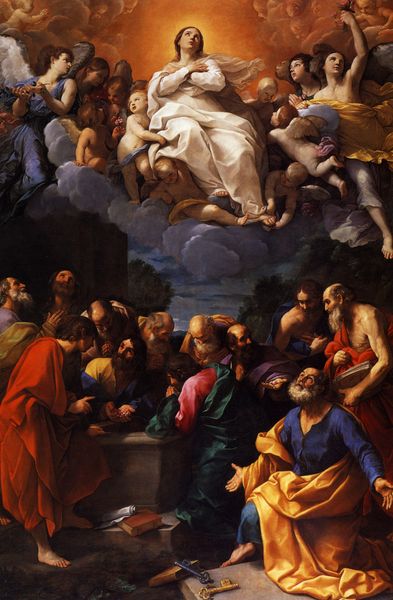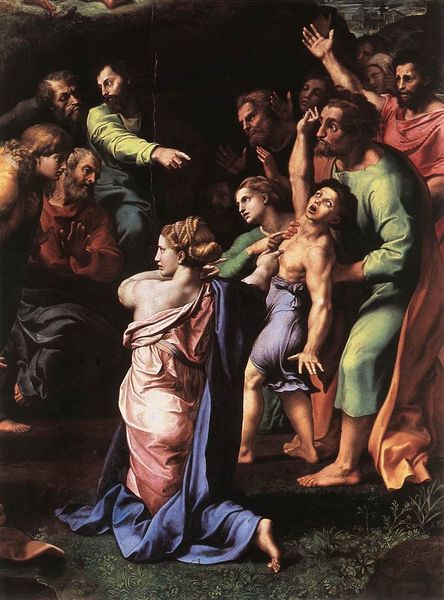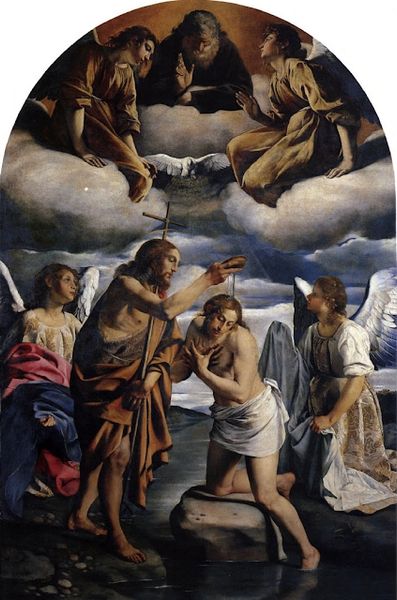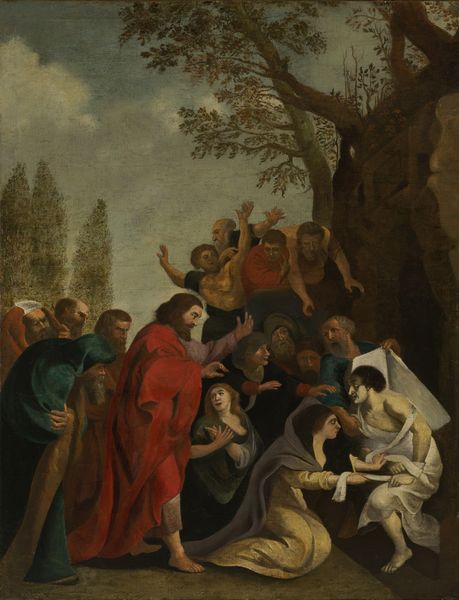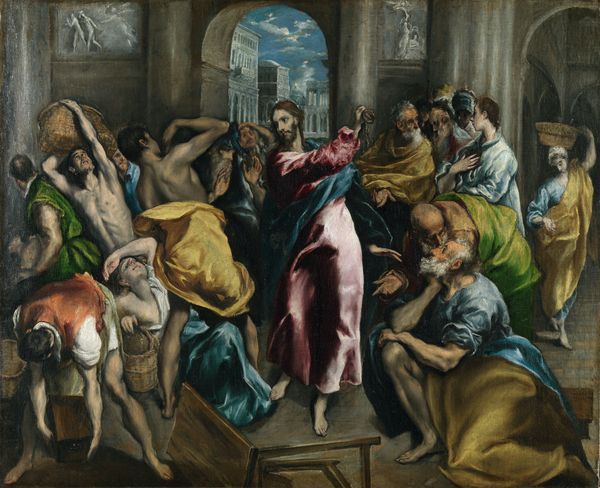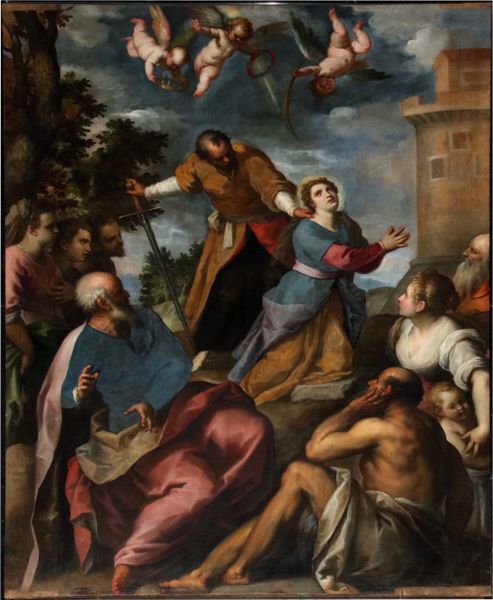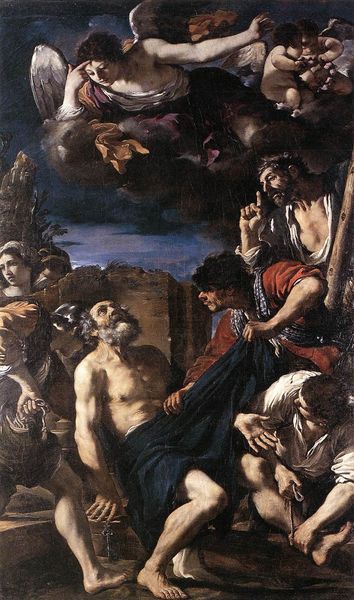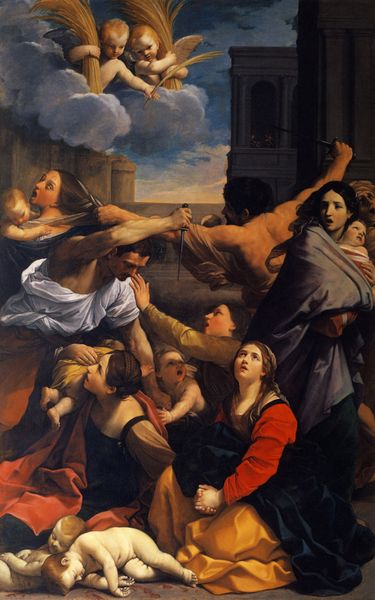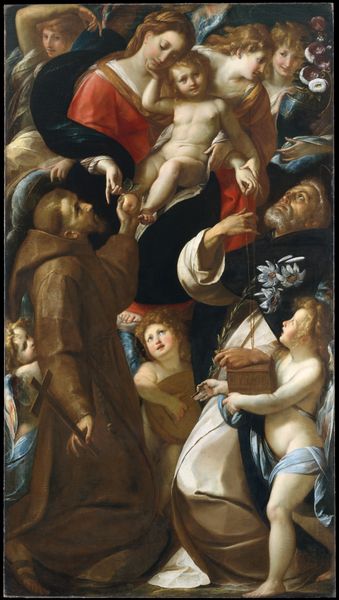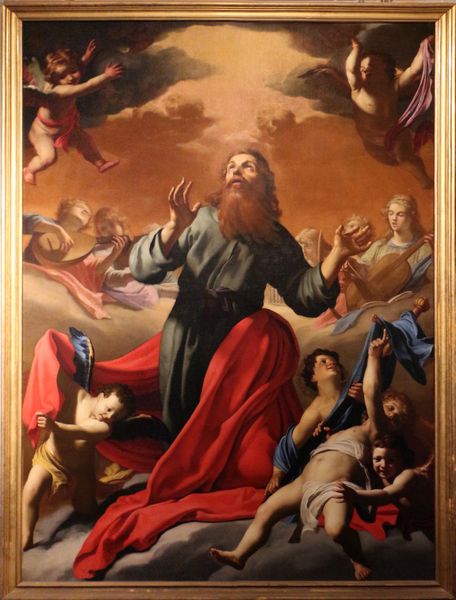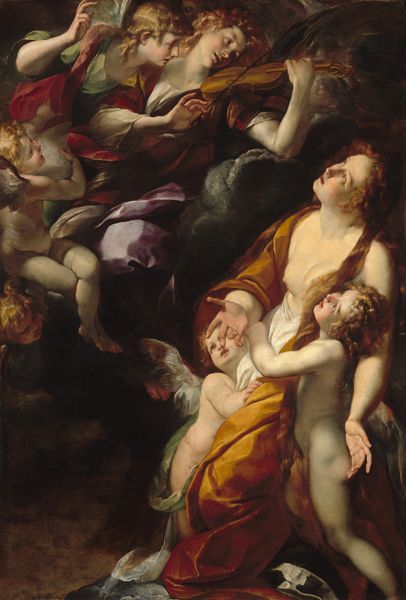
oil-paint
#
allegory
#
baroque
#
oil-paint
#
oil painting
#
christianity
#
history-painting
#
italian-renaissance
#
virgin-mary
#
angel
Dimensions: 400 x 280 cm
Copyright: Public domain
Curator: The artwork before us, painted around 1600, is titled "Assumption" by Guido Reni. Immediately, what stands out for you? Editor: The drama, undeniably! It’s drenched in it, like a theatrical spotlight shining on this pivotal moment of transition. There’s a clear dichotomy here; we have a group of onlookers rooted on solid earth while this divine ascension plays out above. Curator: The iconography is indeed quite powerful. Reni skillfully portrays the Virgin Mary ascending to heaven, surrounded by a choir of angels. This event is profoundly significant in Christian theology, signifying the ultimate glorification of Mary, body and soul. The visual symbolism reinforces a powerful narrative about faith and salvation. Editor: And how interesting is the vantage point – look at those apostles huddled down below, their upward gazes portraying a mixture of awe, maybe even a little confusion. There’s real tension there. How complicit were these painters in reinforcing the power dynamics of the church at that time? Who benefitted the most from that glorification? Curator: You bring up an important question of agency. Note how Reni employs specific symbolic elements to amplify the event's spiritual weight. The angels, the golden light surrounding Mary, the gestures and expressions all work in concert to establish a heavenly atmosphere. These angels could just as easily be symbolic of freedom – free to ascend, unrestricted by earthly bounds, liberated from a life burdened by patriarchy. Editor: I see your point about freedom but wonder about the politics of it all, as we analyze those Renaissance brushstrokes centuries later. How has art participated in both dismantling and maintaining those narratives over time? Curator: Absolutely. These paintings functioned on multiple levels. On the one hand, they delivered powerful religious messages to the masses, who were often illiterate. But on the other, they became emblems of wealth and power. Art becomes a focal point for understanding our historical perspectives. What we may see as devotion today may have masked underlying intentions of oppression back then. Editor: That is the million-dollar question – perhaps it will never have a truly resolved response. This type of dialogue is why it’s imperative to keep exploring art, not only as a representation of history but as a continuing voice in our contemporary discussion of faith, purpose, and equality.
Comments
No comments
Be the first to comment and join the conversation on the ultimate creative platform.
